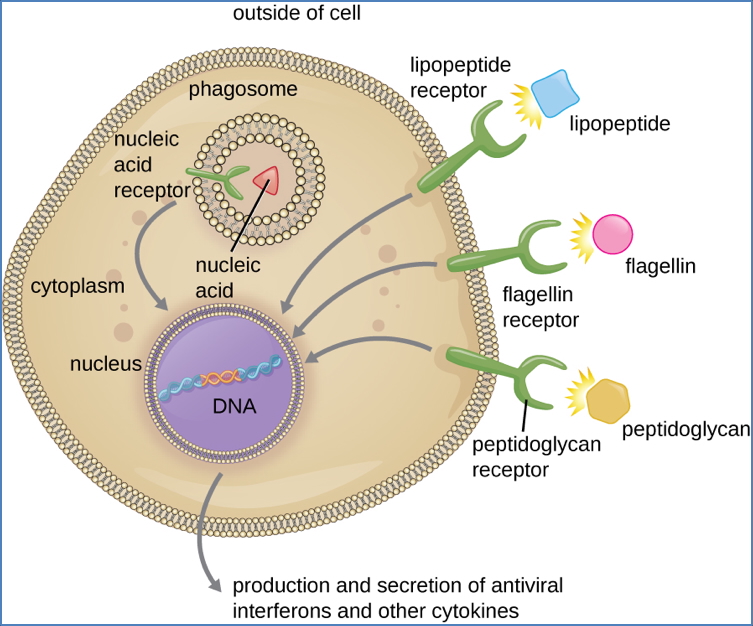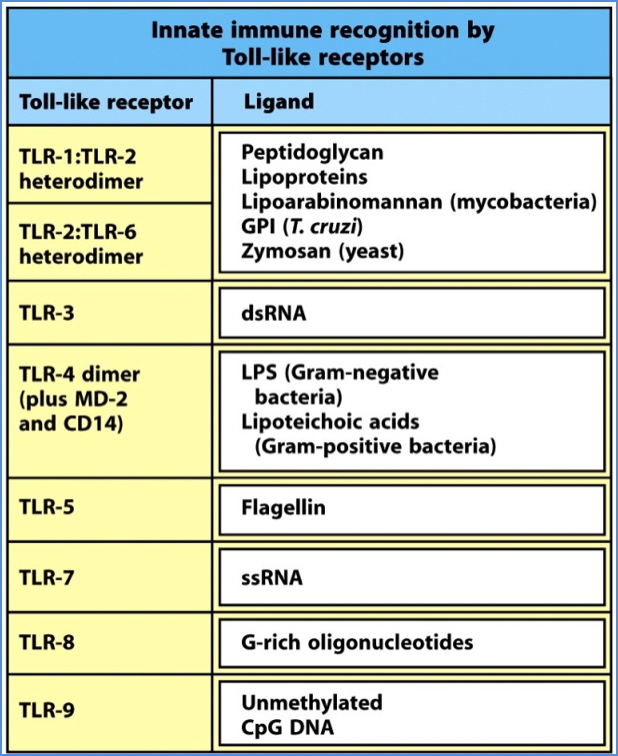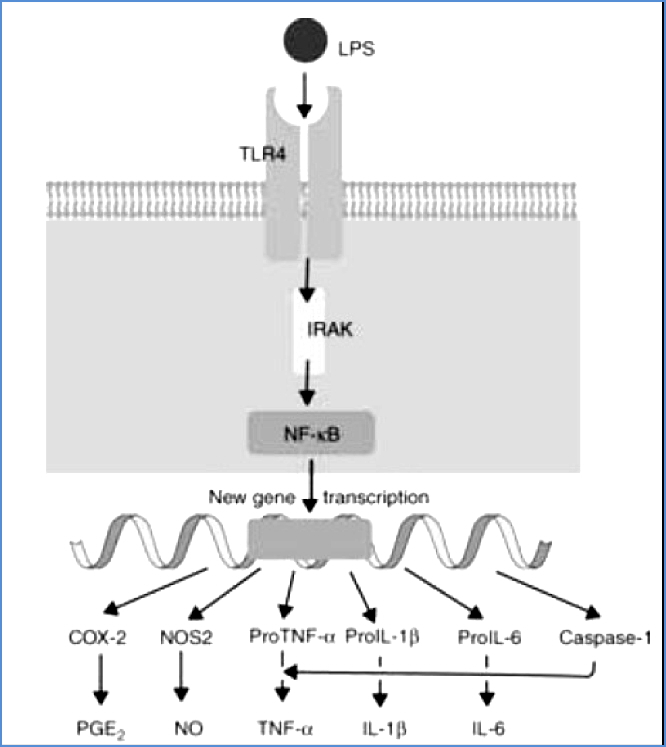Table of Contents
Overview – PAMPs
PAMPs, or Pathogen Associated Molecular Patterns, are conserved molecular signatures found on pathogens but absent from host cells. These molecules allow the innate immune system to rapidly detect microbial invaders through pattern-recognition receptors (PRRs), particularly Toll-like receptors (TLRs). Recognition of PAMPs leads to immediate, non-specific immune responses that serve as the first line of defence until the adaptive immune system is activated.
Definition
- PAMPs = conserved molecules on pathogens, recognised by the innate immune system
- Absent from human cells
- Enable rapid, non-specific immune activation before adaptive immunity develops
- Recognised by Pattern-Recognition Receptors (PRRs), especially TLRs
Function
- Facilitate early immune detection of microbes
- Trigger inflammation and cytokine release
- Direct immune cells to the infection site
- Provide time for development of a targeted adaptive immune response
- Cannot be removed by the pathogen (essential to its survival and replication)
Types of PAMPs
Bacterial PAMPs
- Lipopolysaccharide (LPS):
- Found on Gram-negative bacteria
- Recognised by TLR-4
- Flagellin:
- Structural protein of bacterial flagella
- Found on Gram-positive bacteria
- Recognised by TLR-5
- Lipoteichoic Acid:
- Found in Gram-positive bacterial cell walls
- Recognised by TLR-2
- Lipoarabinomannan (LAM):
- Found in Mycobacterium tuberculosis
- Recognised by TLR-2
Viral PAMPs
- Double-stranded RNA (dsRNA):
- Intermediate form during viral replication
- Recognised by TLR-3
- Viral DNA:
- May trigger other intracellular receptors (e.g. cGAS-STING, not TLRs)


Toll-Like Receptors (TLRs)
Overview
- A subclass of Pattern Recognition Receptors (PRRs)
- Located on antigen-presenting cells (APCs) like dendritic cells, macrophages, and B cells
- Each TLR is tuned to a different microbial component (PAMP)
- Trigger intracellular signalling cascades when bound
Key TLRs and Their Ligands
| TLR | Recognises | Found On |
|---|---|---|
| TLR-4 | Lipopolysaccharide (LPS) | Gram-negative bacteria |
| TLR-5 | Flagellin | Gram-positive bacteria |
| TLR-2 | Lipoteichoic acid, LAM | Gram-positive bacteria, TB |
| TLR-3 | Double-stranded RNA | Viruses |
Activation Mechanism
- TLR binding → Activates transcription factors (e.g. NF-κB, IRFs)
- Leads to production of cytokines and chemokines
- Attracts and activates other immune cells
- The specific cytokine profile depends on which TLR is engaged




Summary – PAMPs
PAMPs are pathogen-specific molecular patterns that activate the innate immune system through receptors like TLRs. This non-specific defence mechanism is crucial for early microbial detection and immune activation. For a broader context, see our Immune & Rheumatology Overview page.